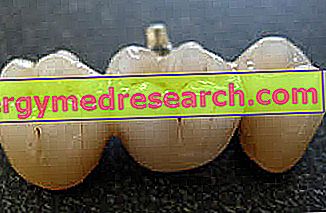Generality
Acne is an inflammation of the pilosebacee glands with papules (solid lesions, detected by the skin surface), pustules (more severe and disfiguring acne lesions, are due to the action of germs and arise on previous papules), comedones (or white spots and blacks), superficial cysts, suppurates (filled with pus) and, in the most serious cases, fistulis (when the cysts unite in the depth of the skin).

Each hair has a gland that produces sebum, that is, the fat that makes the skin elastic and protects it.
If our skin produces excess sebum, it accumulates in the gland. At about 10 - 12 years of age, sebum production is maximum, and it is also the time when acne explodes.

All about Acne
PimplesClassification of acne formsPropionibacterium AcnesDiagnosesNatural remedies for acnePharmaceuticals and treatments for acneAcne: natural remediesHow acne is formed Causes of acnePharmacological therapyAcne: how to repair damage Diet and acneAcnees to cure AcneCreme against acne 'acneHow it forms
How is acne formed?
The "pore" from which the hair comes out is blocked and filled with sebum and small fragments of dead epithelial cells.
A white dot appears on the outside of the pore (closed comedone). The cap can be opened under the pressure of sebum and a black point can be formed (open comedone). Although ugly, it is less formidable, in fact it does not cause inflammation. If, on the other hand, the stopper resists, the sebum accumulates in the channel where the hair is, until it tears the sheath that covers it and creates an inflammation.
If the epidermis breaks, the classic "pimple" (pustule) appears, or a papule appears.
If inflammation fails to find a way out, cysts or nodules are formed.
Adolescent acne mainly affects the forehead and nose area; the acne of adulthood, on the other hand, the lower part of the face, the neck and the shoulders or in any case all the areas where there are more sebaceous glands.
Classification
To learn more: Acne Symptoms
It is useful to classify acne based on its characteristics; this will greatly help both the patient and the doctor.
In this regard, we can distinguish different types of acne:
- Light comedonica : there are few black spots on the forehead or nose.
- Severe comedon : the entire face and back are full of blackheads.
- papular - Comedonica : there are comedones and more swollen, sore and red.
- Papulus - Pustolosa : there are papules and also pustules.
- Pustular : it is characterized by diffuse inflammation and almost all the papules have turned into pustules.
- Pustule - Cystic : characterized by cysts, or hard nodules containing sebum and keratin.
- Cystic : the cysts are much more numerous than the pustules.
- Conglobata : the blackheads aggregate and create deep lesions that will leave scars.
These types of acne should be distinguished from another skin disease called acne rosacea; it is a dermatosis caused by a parasitic mite, it is more frequent in women and is observed with redness in the face (cheeks, nose), papules, pustules and a strong itching. The skin is seborrheic and very prone to redness.
Causes
The causes that cause the appearance of acne can be of different origins and nature. Among these we find:
- Hormonal imbalances : the sebaceous gland, in response to male hormones (testosterone), present both in the male and in the female, produces an excess of sebum. This does not mean that there is a hormonal imbalance, but simply the sebaceous gland "works" in excess.
- Bacterial causes : acne is favored by a bacterium called Propionibacterium Acnes which normally lives on the skin in physiological conditions. If the skin pores are blocked, it multiplies and causes inflammation.
- Genetic predisposition : if we belong to a family in which we have suffered from acne, we can prevent it.
Treatment
To learn more, read: Acne remedies »
There are several treatments that can be undertaken to defeat acne. Depending on the severity of the disorder and the cause that caused it, there are several approaches that can be taken: from natural or homeopathic remedies, up to actual pharmacological treatments that must be prescribed by the doctor or dermatologist.
Instead, to remedy the consequences of acne as scars and various imperfections, various types of aesthetic medicine can be used, always on the advice of your doctor or dermatologist.
However, for more detailed information on all possible acne treatments, please read the dedicated articles on this site.



